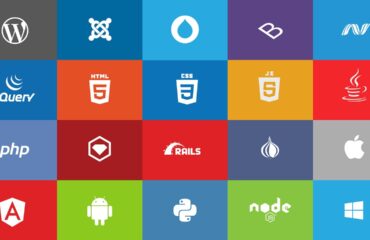With the growing demand for mobile apps, developers are constantly looking for efficient and optimized ways to build cross-platform apps. Bootstrap, a popular front-end framework known for its responsive web development capabilities, can also be used to build mobile apps. In this article, we’ll explore the process of building mobile apps with Bootstrap, focusing on the benefits, best practices, and tools that make cross-platform development easier. By leveraging Bootstrap’s capabilities, developers can leverage their existing web development skills to create mobile apps that work seamlessly across multiple platforms.
Understand the mobile capabilities of Bootstrap:
Emphasize how Bootstrap’s mobile-first approach and responsive design principles make it a suitable choice for building mobile apps. Discuss its flexible grid system, pre-formatted components, and responsive utilities that adapt to different screen sizes. Emphasize how Bootstrap simplifies the development process by providing a solid foundation for mobile app layouts and responsive user interfaces.
Responsive user interface design for mobile applications:
Discuss the importance of responsive user interface design for mobile app development. Explain how Bootstrap’s responsive classes and breakpoints can be used to create responsive layouts and provide a consistent user experience across devices. Provide tips and best practices for designing mobile-friendly interfaces, including touch interaction, navigation patterns, and optimizing content for small screens.
Customizing and extending Bootstrap for mobile apps:
Explore ways to customize and extend Bootstrap to meet specific mobile app requirements. Discuss methods for changing colors, typography, and styles to align with the app’s brand. Highlight the use of custom CSS and overrides to customize the look and feel of an app and create a unique visual identity.
Using Bootstrap Mobile App templates and themes:
Present ready-made Bootstrap mobile app templates and themes that can speed up the development process. Demonstrate popular resources and marketplaces where developers can find professionally designed mobile app templates. Discuss the benefits of using templates, such as saving development time, ensuring a consistent design, and providing a starting point for customization.
Cross-platform development with Bootstrap:
Emphasize how Bootstrap enables cross-platform development by allowing developers to build mobile apps that run on different operating systems. Discuss frameworks and tools such as Cordova (PhoneGap) or Ionic that integrate with Bootstrap to develop hybrid apps with web technologies. Learn about the benefits and considerations of cross-platform development, including code reuse, cost-effectiveness, and reaching a wider audience.
Testing and optimization for mobile apps:
Emphasize the importance of testing and optimizing mobile apps built with Bootstrap. Discuss tools and techniques for testing app speed, performance, and compatibility across devices and platforms. Emphasize the importance of optimizing app assets such as images and scripts to ensure fast loading and a smooth user experience on mobile devices.
Best practices for developing mobile apps with Bootstrap:
Provide a set of best practices for building mobile apps with Bootstrap. Cover topics such as developing modular components, optimizing performance, touch interaction, accessibility considerations, and responsive testing across devices and orientations. Get tips and ideas from experienced developers to help ensure the success of your mobile app projects.
Building mobile apps with Bootstrap opens up a world of possibilities for developers looking to create cross-platform apps. With responsive design, customization options, and an extensive ecosystem of resources, Bootstrap provides a solid foundation for efficient and effective mobile app development. By leveraging Bootstrap’s mobile-first capabilities, developers can leverage their existing web development skills to deliver a seamless and engaging experience for users across devices and platforms.






